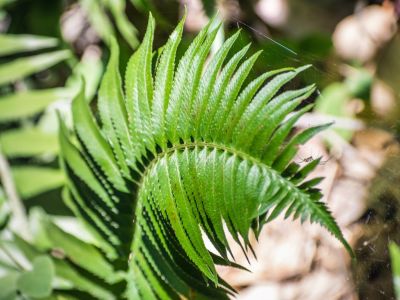All About Sword Ferns
The sword fern (Polystichum munitum) plant is a lush, evergreen groundcover known for its bright green, sword-shaped fronds. You’ll find the young fronds, or fiddleheads, appearing in early spring from their underground rhizomes with most plants eventually reaching 4 to 6 feet (1-2 m.) long. In addition to spreading through rhizomes, sword ferns will also reproduce via spores that are found along the backside of the fronds. These spores appear as brown spots, which are clustered together in groups.
How to Grow Sword Ferns
Learning how to grow sword ferns will be easier if you know how you want to use them in the landscape. Although most people prefer to grow them for ornamental purposes, they have other uses too. For instance, sword ferns make excellent groundcover plants. When planted on hillsides, they can be useful in preventing erosion. They work well with other perennial plantings as well, especially when used as understory plants. Sword ferns perform best in moist shady conditions. However, as long as there is good drainage, the sword fern can easily adapt to a number of soil conditions. They can even thrive in the sun when given plenty of moisture. Sword ferns transplant easily in the garden. While some people may be lucky enough to have these plants growing naturally on their property already, there are various cultivars available through nurseries. Planting takes place in spring, as soon as the ground can be worked. The hole should be about twice as large as the root ball and it often helps to mix in some compost and other organic matter as well.
Sword Fern Care
Once established in the garden, caring for sword ferns is easy. They are drought resistant and usually don’t require much in the way of water, except during the first year after planting when they should be kept evenly moist. Sword fern plants will keep their foliage throughout winter and can be trimmed back in spring if desired, though it’s usually better to only cut off dead foliage. Plants can also be divided in spring and transplanted to other areas of the garden. In addition to their graceful appearance, ease of planting and caring for sword ferns makes them great choices for the landscape. So for those looking to add interest and texture to the garden or fill in open areas, the sword fern plant may be just what the plant doctor ordered. Note: When acquiring this plant, make sure that you are getting Polystichum munitum. There are several varieties of ferns that are commonly called Sword Ferns and some can be very invasive in some climates.
